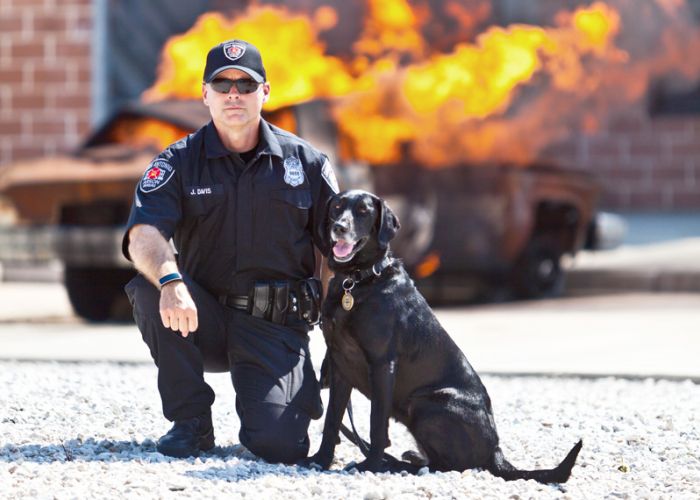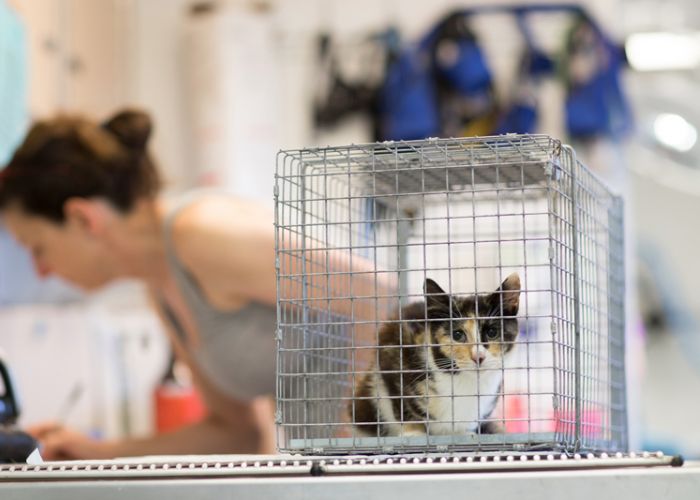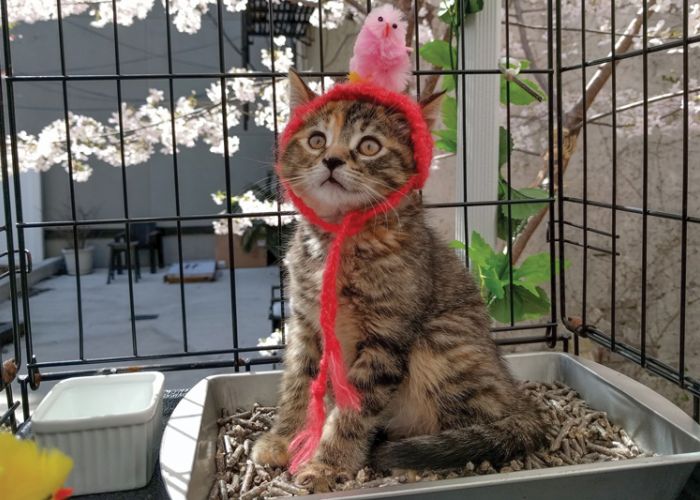With all due respect
Community outreach programs advise less judging, more listening
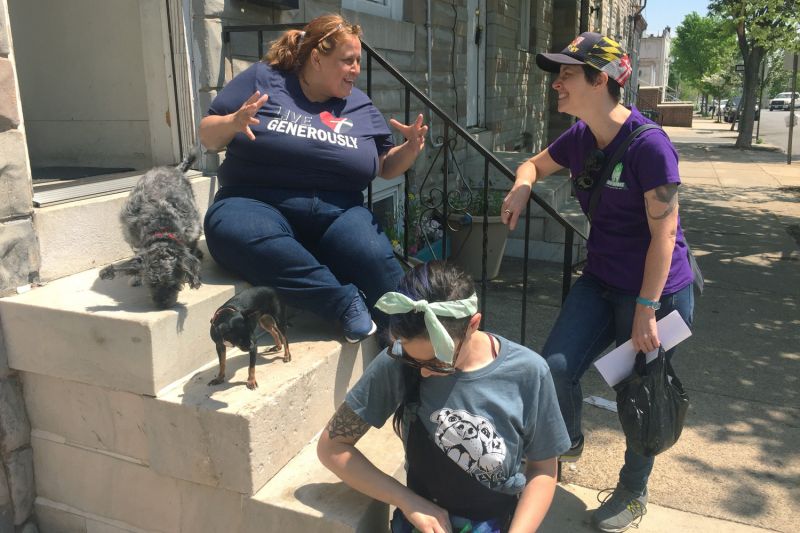
“What do you do when you knock on a door and there are 27 cats behind it?”
It’s one of the questions Danny Burke, former senior program manager for Humane World for Animals’ Pets for Life program, posed to new trainees when introducing them to situations they might encounter doing door-to-door outreach.
It’s a question he’s had to answer in real life, when he first started working for Pets for Life in Chicago. One day on his new beat, Burke walked up to the door of a greystone row home and knocked. An elderly Mexican couple answered. Burke introduced himself in Spanish, and the couple invited him in.
“The first thing I noticed was the overwhelming stench of cat,” says Burke, who quickly saw why—there were felines everywhere.
Instead of freaking out, deciding the couple must be hoarders and reaching for the phone to call animal control, Burke kicked into helping mode—and helping started by listening when the couple asked if he could provide more litter boxes. They only had one, says Burke, “so right away the first thing I could do became super tangible.”
“Hey, we have litter boxes back at the building,” he told them. “I can bring you some more.”
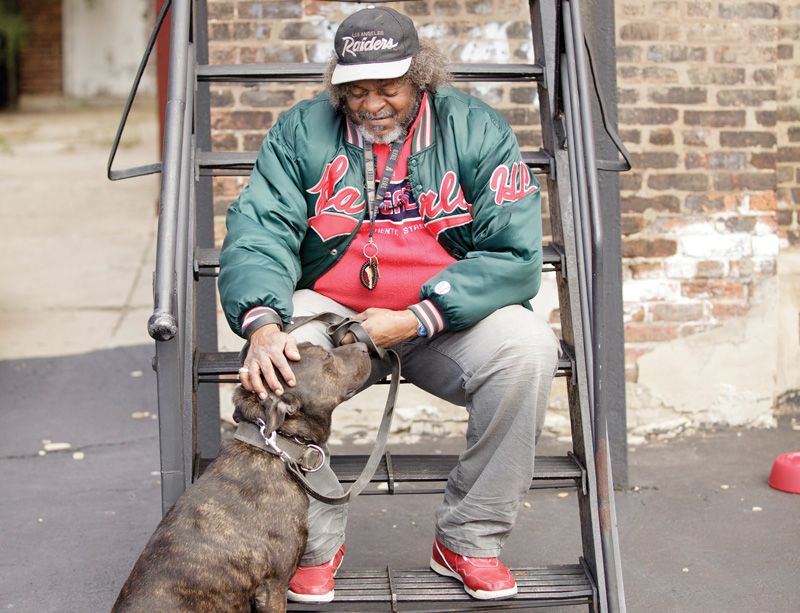
Striving for better, not perfect
It’s human nature to fear the unknown, and when animal welfare teams start working in underserved neighborhoods— before they’re familiar with the area and the people who live there—they might worry about what they’ll encounter behind each new door. But longtime outreach staff and volunteers know that every interaction presents an opportunity for success— for both pets and their owners.
According to Annie Pruitt, executive director and co-founder of Charm City Companions, a Pets for Life-style neighborhood outreach nonprofit in Baltimore, what makes the difference in outcomes often boils down to one word: respect. Community outreach is about making pet services and supplies more affordable and convenient for people in underserved areas, but it’s also about making sure people are treated with respect throughout the relationship. “The latter is often where [outreach efforts] fall short,” says Pruitt.
Pets for Life works in communities where residents are too often accustomed to being treated disrespectfully, whether it’s because of lack of follow-through from those who promise help or because of systemic poverty and institutional discrimination that foster a distrust of authority figures. Many residents in the neighborhoods PFL and its mentorship groups serve are used to being let down and judged by organizations that have come to the neighborhood with big promises, then disappeared. When a stranger shows up at the door and starts asking questions about their pets, it’s understandable that they’re suspicious. So employees and volunteers learn to play the long game, showing up consistently, not overpromising and making sure they deliver on what they do promise.
“I think empathy is really important,” says Burke, adding that it’s important to be viewed as a resource, not some kind of enforcer. If he’d had those 27 cats taken away from Maria and Fernando, a local animal control agency might or might not have been able to find homes for the cats, but the couple surely would have received a fine—likely ending the relationship before it had a chance to begin. Word would likely have spread around the neighborhood that Burke was someone who’d get your pets taken away and get you in trouble, and the next doors he knocked on wouldn’t have opened. That’s a lot of lost opportunities.
When people who’ve been working in animal welfare for a long time adopt the PFL approach, they often have to rethink their prior way of relating to their clients. “It really takes a lot of patience,” says Pruitt. “A lot of people are reactionary in this work, and their instincts would be to pull the animals from a home.”
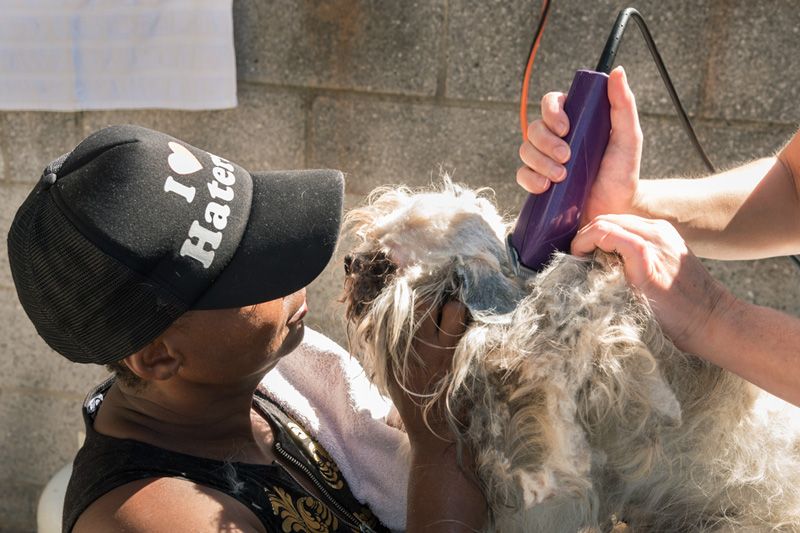
She recalls one family Charm City staff met through door-to-door outreach—a situation where simply listening and being consistent led to an outcome she never would have predicted. The family had several animals, including some severely matted shih tzus who had given birth to other neighborhood pets.
Pruitt started a conversation with Kim, “the matriarch of the family,” and gently introduced the idea of spay/neuter. “Kim had four children of her own, so she understood— her dogs were done having puppies.” Pruitt signed them up.
While the dogs were at the spay/neuter clinic and under anesthesia, they received haircuts, as well. “The owners love it,” Pruitt says, “because [they] don’t have the means to groom them.”
A few months later, the household experienced an outbreak of fleas that was driving both animal and human residents crazy. Charm City gave them flea medication and followed up with the family to ensure the issue was fully resolved.
Up to that point, it had been business as usual for Pruitt’s team—but then came the day Kim reached out and told Pruitt that her son, Troy, had been shot and killed.
“The whole house was falling apart from the stress and grieving,” says Pruitt. “The cat Troy was closest to started pooping all over the house, outside of the litter box. Things started to spiral.”
It’s been a long road for Kim’s family. “We’ve just stuck with them,” says Pruitt. “We’ve just always said, ‘What can we do to make this pet piece easier?’”
Now the family—animals and all—has achieved some stability. Kim, who has post-traumatic stress disorder and has had trouble holding a job, approached Pruitt and asked if she could give back to the organization. She now goes door-todoor with her daughter, helping Charm City reach more people. Charm City Companions has two new volunteers, and Kim has a reason to get out and connect with people in the neighborhood.

Hidden strengths
Part of doing this work successfully is accepting what you don’t know and not making assumptions—about people’s lives, struggles, intentions or feelings.
“Don’t try to get into someone’s head to see at what level they love or don’t love their pet. Your job is to communicate the services available in the most loving and compassionate way, and then let it go,” says Lori Weise, founder of Downtown Dog Rescue, which operates outreach programs in underserved areas of Los Angeles.
Pruitt agrees, saying that assumptions never provide a whole picture. You could see that people have their dogs in crates and aren’t walking them and easily jump to a conclusion, but the reality is often that those people are dealing with such overwhelming life issues that they’re just doing the best they can at that moment.
“It’s crummy, some of the things we walk into,” says Pruitt. “But the owners are aware, and they don’t want things to be that way, they’re just overwhelmed. They love their pets.” Less-than-ideal situations can happen to all of us, says Pruitt, who admits to having run out of clean litter herself now and then.
Weise agrees. “We’ve all experienced a situation where we just need someone to give us a chance.”
That capacity for empathy is critical in this work. What the lucky among us experience as occasional life struggles—a brief period of unemployment, a difficult move, a period of high stress when one’s pets and family don’t get the attention we’d like to give them—become exponentially more difficult for those simultaneously experiencing systemic poverty, the community impacts of mass incarceration and the overall lack of resources and services that others take for granted.
“We’re looking for strengths. ... What are the good things going on here?”
—Lori Weise, Downtown Dog Rescue
Bearing this in mind, when Weise or her volunteers encounter a particularly troubling situation, they don’t focus on what’s “wrong.” Instead, she says, “We’re looking for strengths—in the dog, the cat, the person. What are the good things going on here?”
In the neighborhoods where Pets for Life works, Burke says, it’s not uncommon to see people wearing house arrest bracelets or to encounter families struggling with legal challenges to their immigration status. In these moments, withholding judgment is key to providing services, and perspective is crucial: Communities of color and areas of high poverty are often subjected to greater degrees of scrutiny by law enforcement, and many residents can’t afford legal assistance. “You don’t want to seem shocked over someone’s reality,” he says. “You want to deal delicately with situations like that to ensure the pet can get the services they need.”
And the impact of this approach can be enormous. In the course of her work, Weise has watched some of her clients make incredible comebacks, or even climb to new heights simply because they felt supported. “You do this because you’re giving people the resources and strength when they need someone to lean on, and they just fly.”
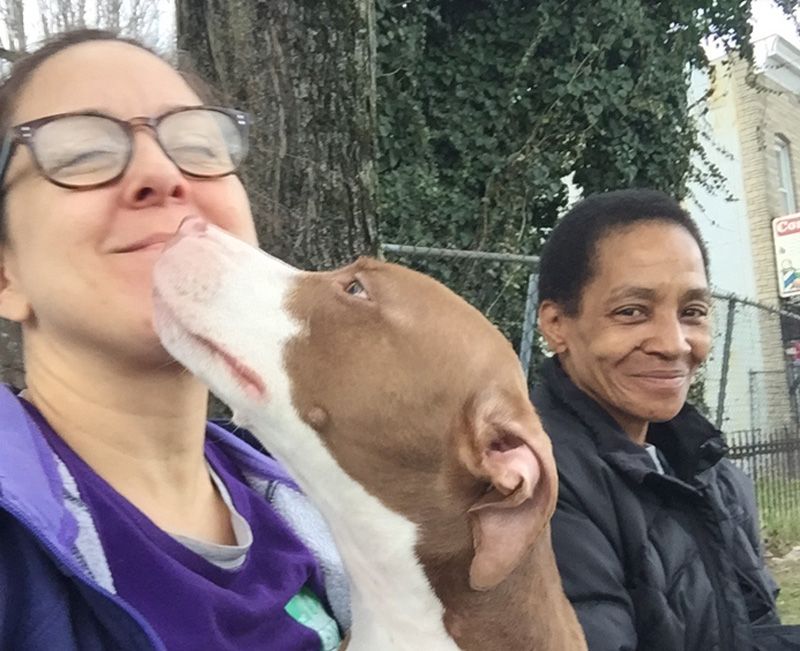
Beyond spay/neuter
As Pruitt sees it, what Charm City does goes well beyond animal welfare work. “We’re a community wellness organization,” she says, “and the way we do that is by going through the doggy door.”
As Charm City volunteers walk the neighborhood, they’ll not only see who’s out walking their dogs, they’ll also notice if someone’s planted trees in an area. “That’s a wellness metric,” says Pruitt, adding that at its best, her group is concerned with people as much as animals.
“Helping people deal with their animals allows them to focus on other stuff,” she notes, and that means her staff can focus on the pet care part of the equation while their clients tackle other life challenges.
Weise says when you build a bond of trust, it’s natural that sometimes people will ask you for other help. “We’re focused on setting boundaries for our volunteers. If someone says, ‘Gee, you helped me with my dog, and now I need a ride to the doctor’— if that volunteer bends the rules and gives the ride, all of the sudden you become a chauffeur.”
She, Pruitt and Burke all say that having staff and volunteers equipped with lists of local resources helps them keep good boundaries and link clients to other organizations that can help them—from legal aid to the local food pantry or Meals on Wheels.
Sometimes it’s still not easy to draw the line, says Weise, who often wishes she could extend herself further. “To have someone self-disclose that they are a heroin addict or have a really bad drinking problem, or that sometimes they black out and don’t remember where their dog is or how they got home … sometimes that makes it hard to sleep at night, reflecting on what you offered the person.”
While her organization does link clients with substance abuse resources, Weise says she encounters these situations so frequently that she’s now training as a substance abuse counselor so she can offer more direct support. Underserved communities typically lack access to the mental health care, therapy, rehab and other services found in more affluent areas.
“We’re a community wellness organization, and the way we do that is by going through the doggy door.”
—Annie Pruitt, Charm City Companions
When operating in a community, the challenges you can encounter are as diverse and unpredictable as the people. Viewing the folks on the other side of the door as fellow humans, first, can go a long way toward turning what may appear to be “problems” into opportunities to not just help pets, but to support the people who love them.
And the couple in Chicago with the 27 cats? It took many visits over several months to get things squared away, but Burke started by simply showing up the next day and dropping off a few more litter boxes, as promised.
From there, he was able to start a conversation about spay/neuter, asking, “So how did you end up with all these cats?” Eventually, all the cats were spayed or neutered. A few of the less social ones were placed in a “cats at work” program where they became mousers for local businesses or farms. A litter of FIV-positive kittens was placed in a special adoption program. Maria and Fernando kept about seven of the cats, including their original pets and the ones to whom they’d grown most attached.
And just how did they end up with all those felines in the first place? Turns out the elderly pair were rescuers at heart. They kept finding kittens in the alley behind their home and started taking them in so they wouldn’t be left to fend for themselves in the fierce Chicago winter.
As Pruitt says, “Any situation is more than face value.”


